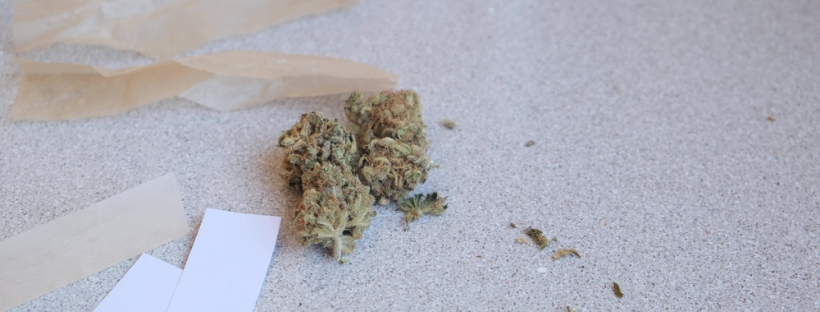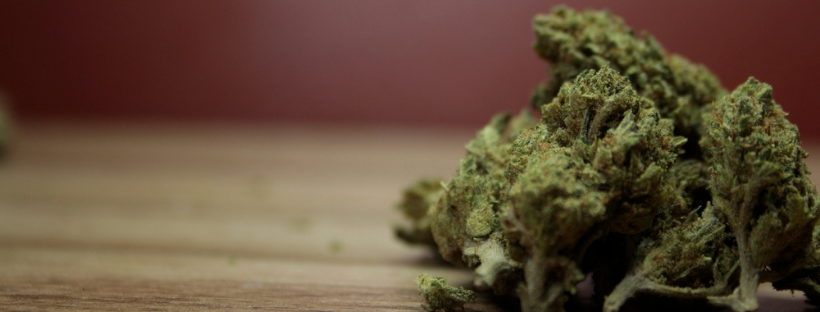Cannabis
A Comprehensive Guide to Sativa Effects
The legalization of cannabis in some states has stirred a growing interest in various cannabis strains and their corresponding effects. A great example is Cannabis sativa
For instance, some sativa effects to expect include a head high instead of a body high. This means that sativa can stimulate your mind without necessarily inducing couch lock. That’s why these strains can pair well with creative projects, physical activity, or social gatherings.
But as more research is done on the cannabis plant, it is discovered that the chemical compounds in each strain (the terpenes and cannabinoids) influence the effects you will feel. As it turns out, the effects don’t depend on whether the cannabis strain is a sativa, indica, or hybrid.
In this article, we provide you with a comprehensive guide to sativa effects. Before we explore how the strain affects your body, let’s talk about the Cannabis sativa plant.
What is Sativa?
Sativa denotes tall and narrow-leaf cannabis plants. They can grow beyond 12 feet and take a longer time to mature compared to their Indica counterparts. They thrive well in hot, dry climates with extended summer days. These include Central America, Africa, Southeast Asia, and parts of Western Asia.
Sativa has typically lower levels of CBD and high THC concentration. Examples of potent sativa strains include:
- Sour Diesel
- Jack Herer
- Durban Poison
- Green Crack
- Purple Haze
- Blue Walker
- Pineapple Express
- Banana Mango
Cannabinoids and Terpenes
Contrary to popular belief, the effects of cannabis strains are more influenced by terpenes and cannabinoids. The particular strains themselves don’t have much sway on the strain’s effects. Therefore, understanding the chemical compounds in cannabis strains is integral in understating their resulting effects.
Cannabinoids interact with the endocannabinoid system in the human body, producing different effects. While there are hundreds of active compounds within the cannabis plant, THC and CBD are the most popular ones.
THC (Tetrahydrocannabinol) is commonly associated with psychotropic sativa effects such as euphoria and the mind high. On the other hand, CBD (Cannabidiol) boasts more physically sedative effects and is often recommended for medical use.
Terpenes, on the other hand, are responsible for cannabis’ variety of unique aromas. Some of the scents associated with terpenes include:
- Floral
- Fruity
- Pine-like or woody
Just like cannabinoids, terpenes also play a role in the effects you get from smoking different marijuana strains.

A Guide to Sativa Effects
Sativa strains are associated with the following effects:
Cerebral High
As earlier mentioned, sativa contains a relatively higher concentration of THC. When THC finds its way into the brain, it sends a series of signals to the endocannabinoid system. These signals resemble those usually transmitted by postsynaptic neurons.
Consequently, the presynaptic neurons temporarily stop transmitting neurotransmitters to the brain and affect the routine flow of information among neurons. The outcome is a cerebral high. It is this sort of mind high that makes you want to get off the bed or couch, dance, clean, cook, exercise, or engage in something constructive.
Energizing
Is your energy reservoir running low? Are you searching for an energy boost? Common sativa effects include increased energy, allowing the individual to maintain a sense of productivity and eradicate fatigue. This could be a game-changer for people who grapple with lethargic feelings during the daytime. The source of lethargy could be stress, insomnia, depression, or anxiety.
Perhaps you don’t suffer from an existing fatigue problem. But you want some much-needed energy to tackle the day ahead without reaching for that mug of coffee. Well, consider Sativa strains like Jack Herer and Durban Poison for your wake and bake session.
Elevates Mood
According to a 2017 research in the journal Nature, the high THC concentration in sativa strains temporarily floods the brain with dopamine. It does this by binding to cannabinoid receptors in the brain.
Dopamine is a key neurotransmitter that triggers the brain’s pleasure and reward system. THC activates neurons in the reward system to secrete the chemical dopamine at increased levels than normally observed when responding to natural pleasurable stimuli. Increased levels of dopamine play a significant role in mood and motivation. That, in part, explains how sativa strains elevate one’s mood, and why people feel a sense of pleasure using it.
Sativa strains also contain terpenoids that give them some mood-enhancing properties. A great example is limonene, which is famous for uplifting the mood.
The Munchies
Sativa stirs up cravings for delicious food through several mechanisms. First, THC boosts the hormone ghrelin. This hormone is responsible for making you feel hungry. Generally, an empty stomach produces increased levels of ghrelin. Thus, the hormone sends signals to the brain to produce the hunger feeling. You don’t necessarily have to be hungry for THC to boost the secretion of ghrelin and activate the hunger sensation.
Next, THC affects a section of the brain that’s responsible for regulating hunger. The hunger sensation induced by THC is acted upon by cannabinoid receptors found in sections of the brain tasked with the regulation of appetite.
And ultimately, THC increases dopamine, the pleasure hormone in the brain. This is why you get increased delight from munching. The terpenes also add to the taste and aroma, so you’re more predisposed to feel like eating.

Creativity
The more ‘feel-good’ chemical the brain produces, the higher the intensity of the consequent sensations of euphoria. Dopamine helps control certain brain functions to boost cerebral focus and sensory perception. Its levels in the brain are increased by THC.
Creativity is related to the frontal lobe in your brain. When you inhale or ingest sativa, it increases the flow of oxygen-carrying blood to this part of the brain. As a result, the brain section becomes increasingly active. Thus, the actions of these neurotransmitters trigger creative outputs.
Creative Divergent Thinking
The frontal lobe is also where creative divergent thinking occurs. This is a key metric in evaluating creativity and helps coordinate abstract ideas for ingenious problem-solving. Divergent thinking is the ability to come up with a couple of solutions to a fairly broad problem. It is essential for any sort of creative thinking.
The psychotropic properties of THC in sativa can potentially boost divergent thinking. Creative thinkers can come up with creative thoughts thanks to divergent thinking. Examples of such include freewriting, brainstorming, and formulating outside-the-box solutions.
Intertwine Abstract Ideas
Any guide to sativa effects would say that the strain boosts your ability to connect abstract ideas contributing to breakthroughs of motivation and fresh ideas. Remember that this is only effective when the right dosage of sativa is consumed. Consuming increased amounts of THC may result in the opposite effect.
Episodic Memory
The recollection and narration of autobiographical events, including times and clearly and in detail is known as episodic memory. The ability to remember these events is a function of the episodic memory process.
Cannabis Sativa strains can boost one’s ability to remember past events. This improved episodic memory recollection can boost the creativity of an individual by drawing upon wide-ranging inspiration.
Pattern Recognition
Pattern recognition is another key element of creativity. It is the ability to conclude any type of data, including semantic, mathematical, or visual. It helps identify solutions to a challenge by seeing related things. Your brain can curate several ideas and settle on the most appropriate one.
Sativa users often exhibit an amazing ability to intertwine seemingly detached words. They can also easily link abstract ideas, identify patterns, and come up with more artistic ideas.
Motivation
Sativa is associated with euphoria and uplifting effects. Thus, motivation isn’t something that users lack when inhaling or ingesting Sativa flower. According to some users, one of the ways Sativa keeps them motivated is through the paranoid side effects that accompany it. The more paranoid they feel, the motivated they get.
For instance, when inhaling an energizing sativa strain that induces paranoia, some users become paranoid of ending up lazy and not getting things done. Therefore, they work hard to drive away that paranoia. Finally, when the effects have subsided, you find yourself having completed a lot of tasks.

Anxiety-reducing
Sometimes anxiety may become a huge problem in your life. Often, it affects your social life and relationships and ultimately your self-confidence. When it comes to a dented self-confidence, social awkwardness rears its ugly head.
Because of its trademark euphoric and uplifting effects, sativa strains work wonders to reduce anxiety. Of course, indica strains also help with anxiety management but they may be highly body-numbing. So they are appropriate when you’re just about to retire to bed. However, if the rest of the day is still ahead of you, Sativa strains are more appropriate before you face that important job interview or date with your loved one.
With sativa flower, your confidence skyrockets because of increased creativity. So your social interactions become much happier. Not to mention that based on the type of strain you’re using, you may be subject to ‘giggles’, which is an icebreaker when interacting with peers.
Sativa Side Effects
Like any other drug, sativa can activate some unwanted side effects. Being aware of the potential side effects of consuming sativa ensures you can light up while being safe. Here are some of the common sativa side effects:
Anxiety & Paranoia
The high THC content in sativa strains is responsible for its psychotropic effects. The effects could be overpowering, particularly if you’re in a foreign setting or surroundings. You may feel anxiety and panic attacks with palpitation.
For inexperienced pot users, a strong sativa strain can even cause temporary psychosis or paranoia, especially among those inclined to mental health problems. This is why it’s important for first-timers to carefully choose among the sativa strains.
If you notice that sativa is making you feel nervous or worried, the strain itself is not the actual cause of the problem. Instead, it’s the high THC concentration. Ideally, opt for a lower THC strain for a much gentler high. Another strategy is to ingest some CBD oil to counteract THC’s strong effects.
Dizziness
While smoking any cannabis might cause you to feel dizzy, a high-THC sativa strain is more likely to intensify the feeling. Smoking marijuana lowers your blood pressure, causing a sense of lightheadedness. Proper hydration is an excellent tip against the dizziness problem. You may also want to chill on the couch to avoid accidents until the feeling of dizziness passes.

Overeating
The increased appetite caused by a potent sativa strain can mean a more enjoyable high for people who enjoy eating food. However, keep in mind that too much eating can lead to health problems, especially when you’re consuming fatty foods. The trick is to keep healthier foods and snacks, like popcorn and nuts, handy during sessions. This way, you’re not tempted to overeat pizza and junk food once you’re high.
Insomnia
Sativa effects include increased energy levels and improved focus. Because of its energizing effect, the strain is ideal for daytime use. With an energy boost, you can stay active all day long.
But if you use sativa before bedtime, you might not be able to find any sleep all night. At first, you may enjoy your mind racing with random thoughts. After some time, though, you may end up frustrated when you don’t catch sleep because of insomnia.
Dry Mouth
Dry mouth is also known as cottonmouth. It occurs when THC attaches to the receptors located in your salivary glands. Hence, the production of saliva is slowed down. To combat this sativa side effect, it is important to keep yourself hydrated when smoking your choice of sativa strain.
The Bottom Line
Cannabis sativa has several beneficial effects. These strains are known for their ability to boost energy, creativity, and motivation. These strains also cause positive, mood-enhancing effects. Furthermore, most sativa strains come with great taste and aroma.
To prevent potential sativa side effects, users should exercise moderation. Because of the psychoactive effects of THC, you should ideally start with a low dose and see how your body responds. After all, everything is good in moderation. Hopefully, this guide to sativa effects has helped you set expectations from consuming Cannabis sativa strains.

